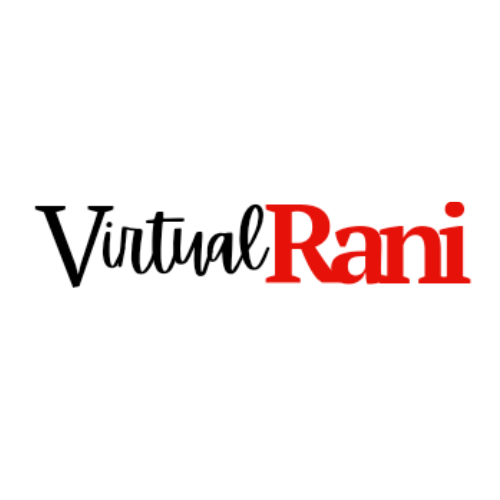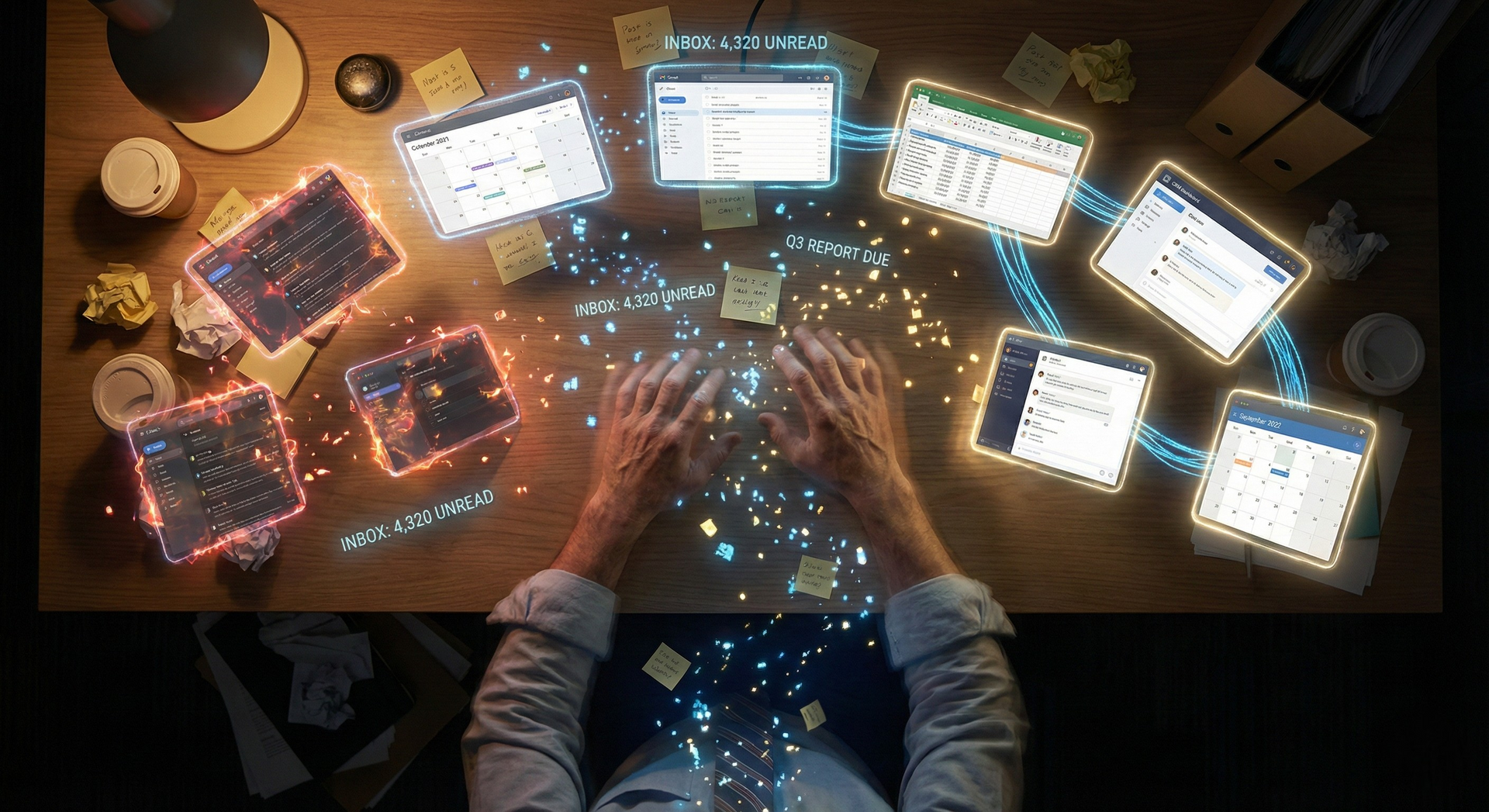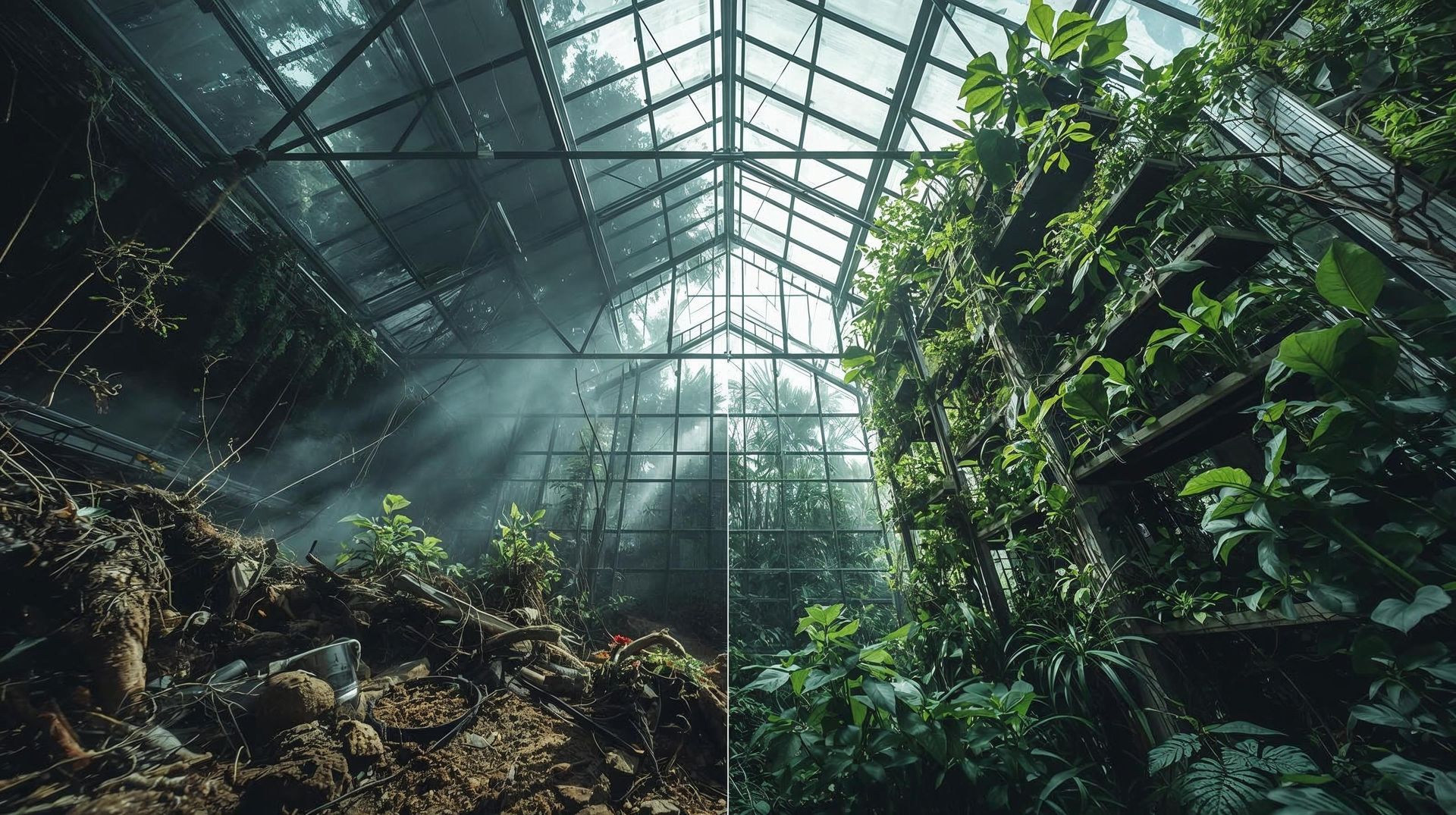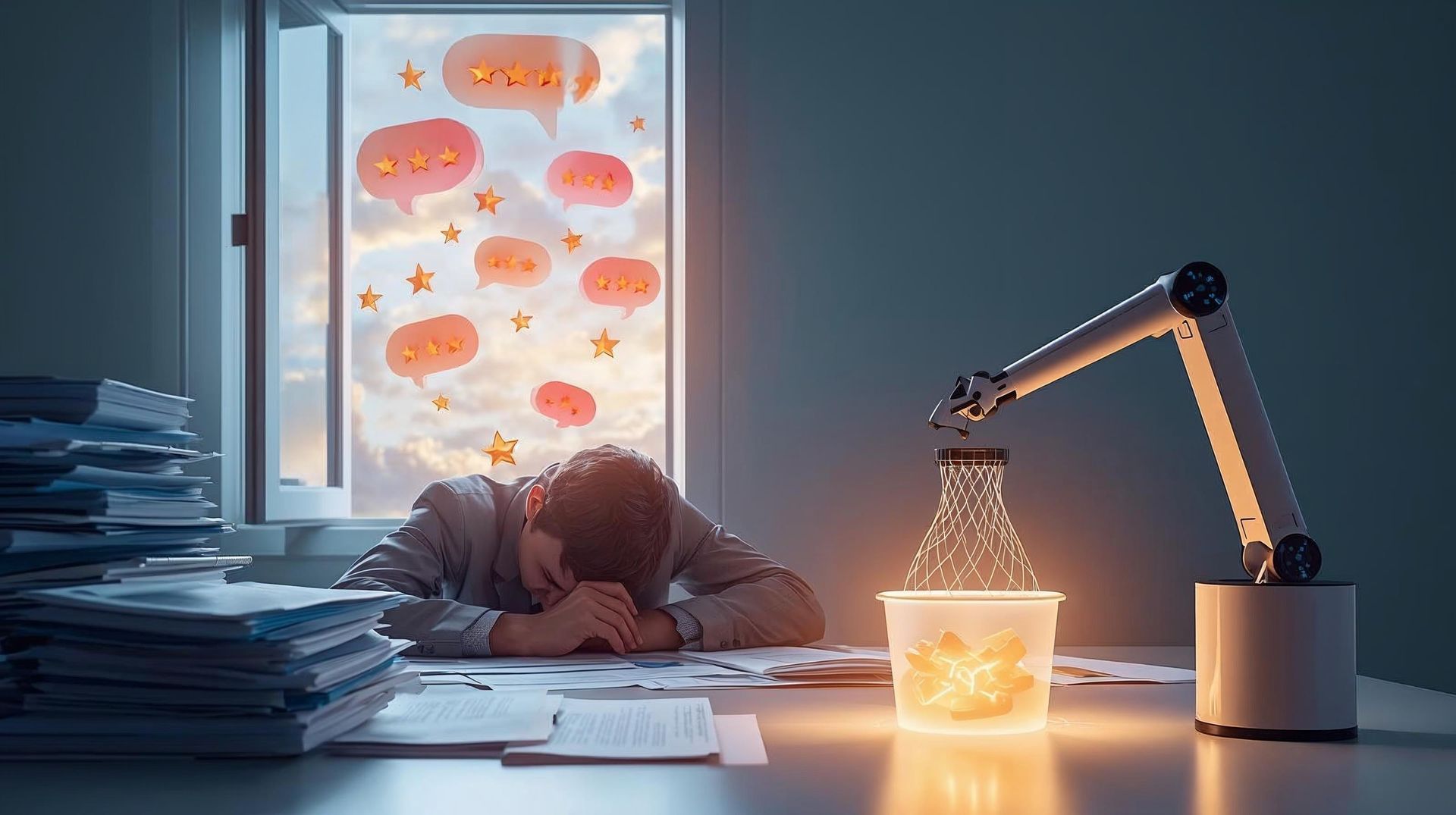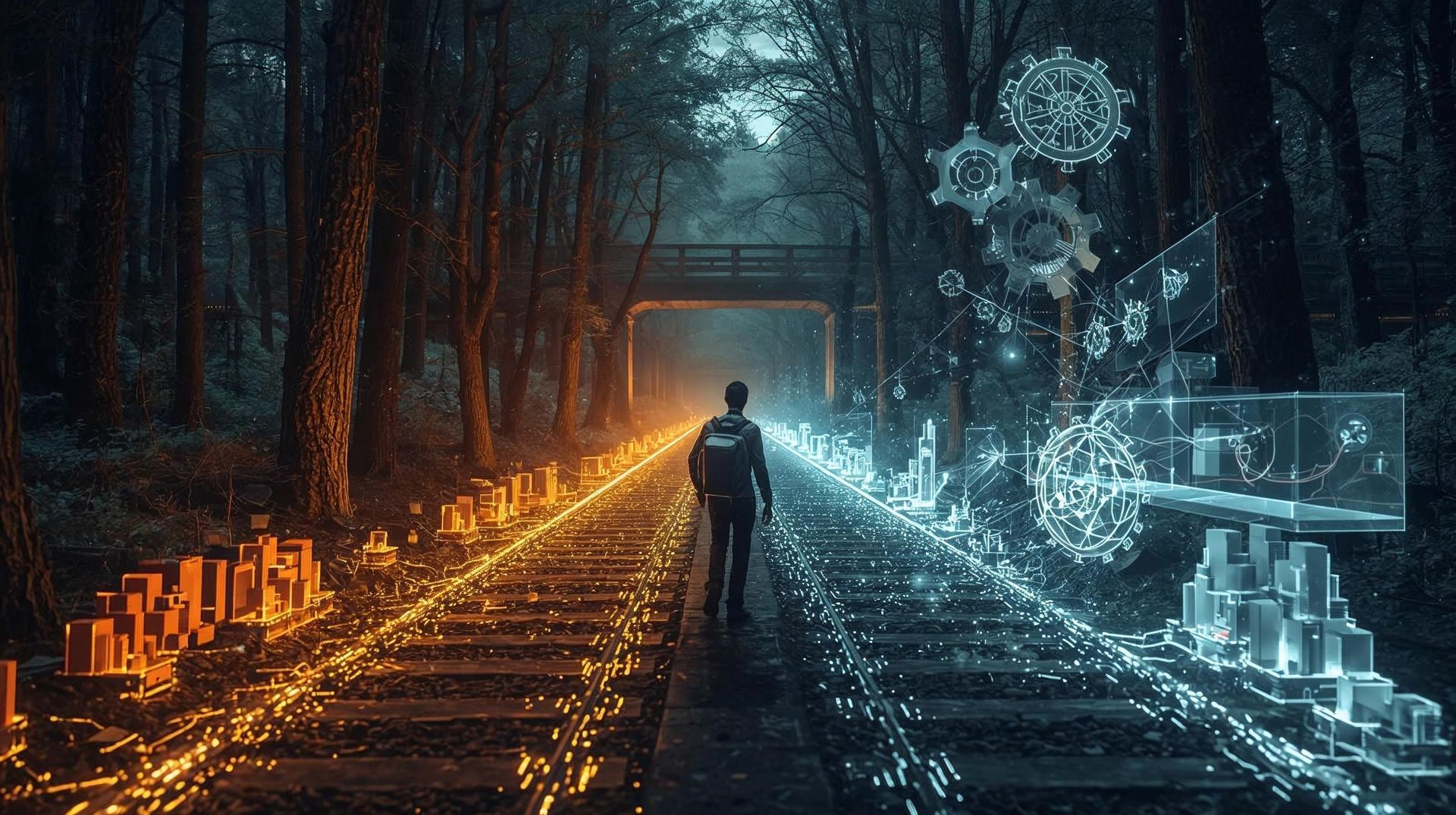The New AI-Augmented Team: Redefining Roles in Your Business
The traditional agency model is dead. Not because it was broken, but because it's being rebuilt from the ground up by artificial intelligence. While most business leaders are still debating whether AI will replace human workers, the smartest organizations are already implementing a fundamentally different approach: the AI-augmented team.
This isn't about laying off half your workforce and hoping ChatGPT can fill the gaps. It's about reimagining how work gets done when human creativity meets machine efficiency. The companies that master the AI revolution will dominate their industries.
The Death of the Specialist Silo
For decades, service businesses have operated on a simple principle: hire specialists for specialized tasks. Need content? Hire a copywriter. Need data insights? Hire an analyst. Need customer support? Hire support representatives. This model created clear org charts, defined responsibilities, and predictable workflows.
But AI is collapsing these silos faster than most leaders realize. A marketing manager can now generate months of content in hours, analyze customer data in real-time, and provide sophisticated customer support through AI-powered systems. The bottleneck isn't access to specialized skills anymore, it's knowing how to orchestrate these capabilities effectively.
This shift is creating a new breed of professional: the AI orchestrator. These aren't programmers or data scientists. They're strategic generalists who understand both business objectives and AI capabilities well enough to bridge the gap between human intention and machine execution.
The Rise of the AI Orchestrator
AI orchestrators are the conductors of digital symphonies. They don't need to play every instrument, but they need to understand how each one contributes to the final performance. Their core competencies include:
Prompt Engineering Mastery: The ability to communicate with AI systems in ways that produce consistently high-quality outputs. This goes far beyond basic ChatGPT conversations, it's about understanding how to structure prompts, chain AI workflows, and iterate on results to achieve specific business outcomes.
Cross-Functional AI Integration: Understanding how AI tools can work together across departments. An AI orchestrator might connect customer service AI with marketing automation, or link content generation tools with data analysis platforms to create unified customer experiences.
Quality Control and Human Oversight: Knowing when AI outputs need human refinement and how to maintain brand voice, accuracy, and strategic alignment across AI-generated work.
Workflow Design: Creating systems that leverage AI capabilities while maintaining human creativity and strategic thinking where they add the most value.
Roles in Transition: Evolution, Not Elimination
The goal is to amplify human expertise. Here's how traditional roles are evolving:
From Copywriter to Content Strategist: Instead of writing every word, content professionals are becoming strategic directors who define brand voice, create content frameworks, and guide AI systems to produce on-brand materials at scale. They're focusing on high-level storytelling, brand positioning, and content strategy while AI handles the volume work.
From Data Analyst to Insight Architect: Data professionals are shifting from manual analysis to designing AI-powered insight systems. They're creating dashboards that automatically surface actionable intelligence, building predictive models, and translating complex data patterns into strategic recommendations.
From Customer Service Rep to Experience Designer: Customer service is evolving toward experience design, where professionals create AI-powered support systems that can handle routine inquiries while humans focus on complex problem-solving and relationship building.
From Project Manager to Workflow Engineer: Project management is becoming increasingly about designing efficient AI-human collaboration workflows rather than simply tracking tasks and deadlines.
The New Organizational Structure
The AI-augmented team typically operates with three core layers:
Strategic Layer: Senior professionals who define objectives, make high-level decisions, and maintain client relationships. These roles require deep industry knowledge, strategic thinking, and the ability to translate business needs into AI-executable tasks.
Orchestration Layer: AI orchestrators who manage day-to-day AI workflows, ensure quality control, and optimize the integration between human creativity and machine efficiency. These professionals are the connective tissue between strategy and execution.
Specialist Layer: Focused experts who handle tasks that require deep human expertise, complex problem-solving, creative ideation, relationship building, and strategic consulting. These roles are smaller in number but higher in value.
Hiring for the AI-Augmented Future
When building your AI-augmented team, prioritize these characteristics:
Learning Agility: The AI landscape changes rapidly. Look for professionals who demonstrate curiosity about new tools and the ability to quickly adapt their workflows to leverage new capabilities.
Systems Thinking: AI orchestrators need to understand how different tools and processes connect. Seek candidates who can think in terms of workflows and integration rather than isolated tasks.
Strategic Mindset: The most valuable team members will be those who can connect AI capabilities to business outcomes. Technical skills can be taught, but strategic thinking is harder to develop.
Communication Skills: AI orchestrators must be able to communicate effectively with both AI systems and human team members. This includes the ability to write clear prompts, provide constructive feedback on AI outputs, and translate between technical capabilities and business needs.
Reskilling Your Current Team
The transition to AI-augmented teams doesn't require starting from scratch. Your current team members likely possess the domain expertise and institutional knowledge that will be crucial for success. The key is helping them develop AI orchestration capabilities:
Start with Tool Training: Introduce your team to the AI tools most relevant to their current roles. Provide hands-on training in prompt engineering, workflow design, and quality control.
Develop Cross-Functional Understanding: Encourage team members to understand how AI tools work across different departments. A marketing professional who understands how AI can enhance customer service will be more valuable than one who only knows marketing AI tools.
Create Experimentation Time: Allow team members to experiment with AI tools during work hours. The best insights often come from hands-on exploration rather than formal training.
Establish Mentorship Programs: Pair team members who are quick to adopt AI tools with those who need more support. Peer-to-peer learning is often more effective than top-down training.
The Competitive Advantage
Organizations that successfully implement AI-augmented teams will enjoy several competitive advantages:
Increased Agility: Smaller, more capable teams can pivot quickly and take on diverse projects without the overhead of large specialist departments.
Enhanced Creativity: When AI handles routine tasks, human team members can focus on strategic thinking, creative problem-solving, and relationship building.
Improved Margins: AI-augmented teams can deliver the same quality of work with fewer people, leading to better profit margins and more competitive pricing.
Better Client Outcomes: The combination of human expertise and AI efficiency often produces better results than either could achieve alone.
Implementation Roadmap
Successfully transitioning to an AI-augmented team requires a thoughtful approach:
Phase 1: Assessment and Planning (Months 1-2)
- Audit current roles and identify AI automation opportunities
- Select initial AI tools and begin pilot programs
- Develop training curricula for AI orchestration skills
Phase 2: Pilot Implementation (Months 3-6)
- Launch AI orchestration training for key team members
- Implement AI tools in controlled environments
- Measure productivity gains and quality improvements
Phase 3: Full Integration (Months 7-12)
- Expand AI integration across all departments
- Refine workflows based on pilot learnings
- Adjust organizational structure to support AI-augmented operations
Phase 4: Optimization (Months 13+)
- Continuously improve AI-human collaboration workflows
- Stay current with new AI tools and capabilities
- Scale successful approaches across the organization
The Bottom Line
The AI-augmented team isn't a distant future concept, it's a present reality for forward-thinking organizations. The companies that embrace this model today will have a significant advantage over those that wait for the transformation to be forced upon them.
The transition requires investment in training, experimentation, and cultural change. But the payoff, increased agility, enhanced creativity, improved margins, and better client outcomes, makes this investment essential for long-term success.
Your competitors are already experimenting with AI-augmented teams. The question isn't whether you'll eventually need to make this transition, but whether you'll be a leader or a follower in the process. The future belongs to organizations that can seamlessly blend human expertise with artificial intelligence capabilities.
Start planning your AI-augmented team today. Your future self will thank you.
© Virtual Rani 2025. The information contained herein is provided for information purposes only; the contents are not intended to amount to advice and you should not rely on any of the contents herein. We disclaim, to the full extent permissible by law, all liability and responsibility arising from any reliance placed on any of the contents herein.
